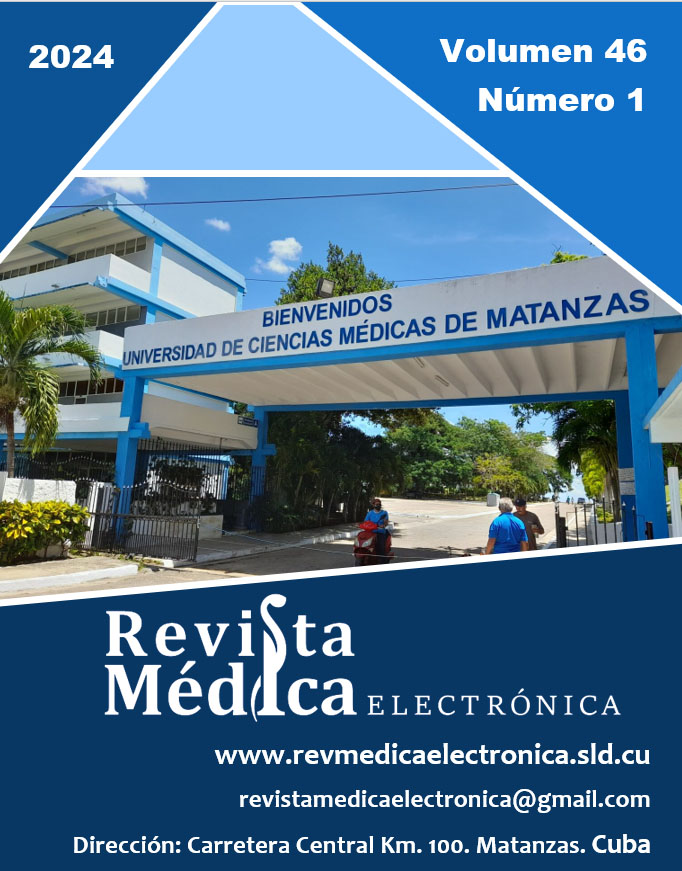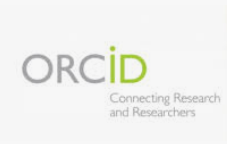Challenges for teaching medical sciences under contingency conditions
Keywords:
teaching, teaching-learning, virtual teaching, pandemics, medical sciencesAbstract
The pandemic of COVID-19 contributed to affect the traditional training process of the health professionals, which is why adjustments and modifications were abruptly implemented to guarantee the continuity of the teaching-learning process. The objective of the bibliographical review is to update the adequacy in the teaching methods in the different teaching scenarios during the different contingency stages. The review included publications, mostly from the period 2019-2021, and database used were mainly EBSCO, CUMED and SciELO. As a result of the research, it is proposed the complementation of face-to-face classes by other remote modalities, either virtual or online: a semi-face-to-face form, with a bigger employment of the social networks and virtual platforms. In conclusion, the teaching of medical sciences in times of contingency is a challenge, since it has been necessary to move from traditional face-to-face education to other forms, with emphasis on information and communication technologies, and thus reorganize education to ensure the training of health professionals.
Downloads
References
2. Cáceres-Muñoz J, Jiménez Hernández AS, Martín-Sánchez M. Cierre de escuelas y desigualdad socioeducativa en tiempos del Covid-19. una investigación exploratoria en clave internacional. Rev Int Educ Para Justicia Soc. 2020;9(3):199-221. DOI: 10.15366/riejs2020.9.3.011.
3. González-Calvo G, Barba-Martín RA, Bores-García D, et al. Aprendiendo a ser docente sin estar en las aulas. La COVID-19 como amenaza al desarrollo profesional del futuro profesorado. Int Multidiscip J Soc Sci. 2020;9(2):152-77. DOI: 10.17583/rimcis.2020.5783.
4. Cayo-Roja CF, Agramonte-Rosell RC. Desafíos de la educación virtual en Odontología en tiempos de pandemia COVID-19. Rev Cubana Estomatol [Internet]. 2020 [citado 31/05/2023];57(3):e3341. Disponible en: http://scielo.sld.cu/scielo.php?pid=S0034-75072020000300017&script=sci_arttext
5. González-García S, Pérez IC, Urda MO, et al. Un reto en tiempos de pandemia para la educación médica en Cuba. Educ Médica Super [Internet]. 2020 [citado 31/05/2023];34(3). Disponible en: https://ems.sld.cu/index.php/ems/article/view/2457/0
6. Bachelor JW. El aula presencial, semipresencial, virtual e invertida: Un estudio comparativo de métodos didácticos en la enseñanza de L2. Rev Educ [Internet]. 2019 [citado 31/05/2023];43(2). Disponible en: https://www.scielo.sa.cr/pdf/edu/v43n2/2215-2644-edu-43-02-00501.pdf
7. Alejo Flores E. Influencia del modelo de enseñanza a distancia en el aprovechamiento escolar. Dilemas contemp: educ política valores. 2021;8(3). DOI: 10.46377/dilemas.v8i3.2638.
8. García Aretio L. Bosque semántico: ¿educación/enseñanza/aprendizaje a distancia, virtual, en línea, digital, eLearning…? RIED [Internet]. 2020 [citado 31/05/2023]; 23(1). Disponible en: https://www.redalyc.org/journal/3314/331462375001/331462375001.pdf
9. García Aretio L. COVID-19 y educación a distancia digital: preconfinamiento, confinamiento y postconfinamiento. RIED. 2021; 24(1):09-32. DOI: 10.5944/ried.24.1.28080.
10. Pérez López E, Vázquez Atochero A, Cambero Rivero S. Educación a distancia en tiempos de COVID-19: análisis desde la perspectiva de los estudiantes universitarios. RIED. 2021;24(1):331-50. DOI: 10.5944/ried.24.1.27855.
11. Soca Guevara EB. El trabajo independiente en el proceso de enseñanza-aprendizaje. Rev Cubana Inform Médica [Internet]. 2015 [citado 31/05/2023];7(2). Disponible en: https://revinformatica.sld.cu/index.php/rcim/article/view/102
12. Chelala CR, Legrá AS. Propuesta sobre aprendizaje en red en su modalidad mixta en la asignatura ortopedia y traumatología. Manzanillo: Primer Congreso Virtual de Ciencias Básicas Biomédicas; 2020.
13. Aguilar-Salinas WE, Fuentes-Lara M de las, Justo-López A, et al. Percepción de los estudiantes acerca de la modalidad semipresencial en la enseñanza de las ciencias básicas de la Ingeniería. Un estudio de caso universitario. Form Univ. 2019;12(3):15-26. DOI: 10.4067/S0718-50062019000300015.
14. Franco Pérez M, León Granados A. El trabajo independiente en la educación superior a través de la tarea docente. Edumecentro [Internet]. 2009 [citado 31/05/2023];1(2):[aprox. 6 p.]. Disponible en: http://www.revedumecentro.sld.cu/index.php/edumc/article/view/26/57
15. Mateo Mejía LG. La guía didáctica: práctica de base en el proceso de enseñanza-aprendizaje y en la gestión del conocimiento. Apertura [Internet]. 2013 [citado 31/05/2023];5(1):66-73. Disponible en: https://www.redalyc.org/pdf/688/68830443006.pdf
16. Galán A. La enseñanza de la traducción en la modalidad semipresencial [tesis en Internet]. Barcelona: Universidad Autónoma de Barcelona; 2009 [citado 31/05/2023]. Disponible en: https://ddd.uab.cat/record/63866
17. Jalali A, Sherbino J, Frank J. Social media and medical education: exploring the potential of Twitter as a learning tool. Int Rev Psychiatry. 2015;27(2):140-6. DOI: 10.3109/09540261.2015.1015502.
18. Sutherland S, Jalali A. Social media as an open-learning resource in medical education: current perspectives. Adv Med Educ Pract [Internet]. 2017 [citado 31/05/2023];8:369-75. Disponible en: https://www.ncbi.nlm.nih.gov/pmc/articles/PMC5476438/
19. Vergara de la Rosa E, Vergara Tam R, Álvarez Vargas M, et al. Educación médica a distancia en tiempos de COVID-19. Educ Méd Super [Internet]. 2020 [citado 31/05/2023];34(2). Disponible en: http://www.ems.sld.cu/index.php/ems/article/view/2383
20. Cervantes Holguín E, Gutiérrez Sandoval PR. Resistir la Covid-19. Intersecciones en la Educación de Ciudad Juárez, México. Rev Int Educ Para Justicia Soc [Internet]. 2020 [citado 31/05/2023];9(3):7-23. Disponible en: http://cathi.uacj.mx/bitstream/handle/20.500.11961/11665/Art%c3%adculo%20COVID.pdf?sequence=1&isAllowed=y
21. Aquino EM, Silveira IH, Pescarini JM, et al. Medidas de distanciamento social no controle da pandemia de COVID-e19: potenciais impactos e desafios no Brasil. Cien Saude Colet [Internet]. 2020 [citado 31/05/2023];25(suppl 1):2423-46. Disponible en: https://www.scielosp.org/pdf/csc/v25s1/1413-8123-csc-25-s1-2423.pdf
22. Area Moreira M, Bethencourt Aguilar A, Martín Gómez S. De la enseñanza semipresencial a la enseñanza online en tiempos de Covid19. Visiones del alumnado. Campus Virtuales [Internet]. 2020 [citado 31/05/2023];9(2):35-50. Disponible en: file:///C:/Users/User/Downloads/Dialnet-DeLaEnsenanzaSemipresencialALaEnsenanzaOnlineEnTie-8005979.pdf
23. García-Peñalvo FJ, Corell A, Abella-García V, et al. La evaluación online en la educación superior en tiempos de la Covid-19. Education in the Knowledge Society. 2020. DOI: 10.14201/eks.23086.
Downloads
Published
How to Cite
Issue
Section
License
All content published in this journal is Open Access, distributed under the terms of the CC BY-NC 4.0 License.
It allows:
- Copy and redistribute published material in any medium or format.
- Adapt the content.
This will be done under the following terms:
- Attribute the authors' credits and indicate whether changes were made, in which case it must be in a reasonable way.
- Non-commercial use.
- Recognize the journal where it is published.
The copyrights of each article are maintained, without restrictions.






